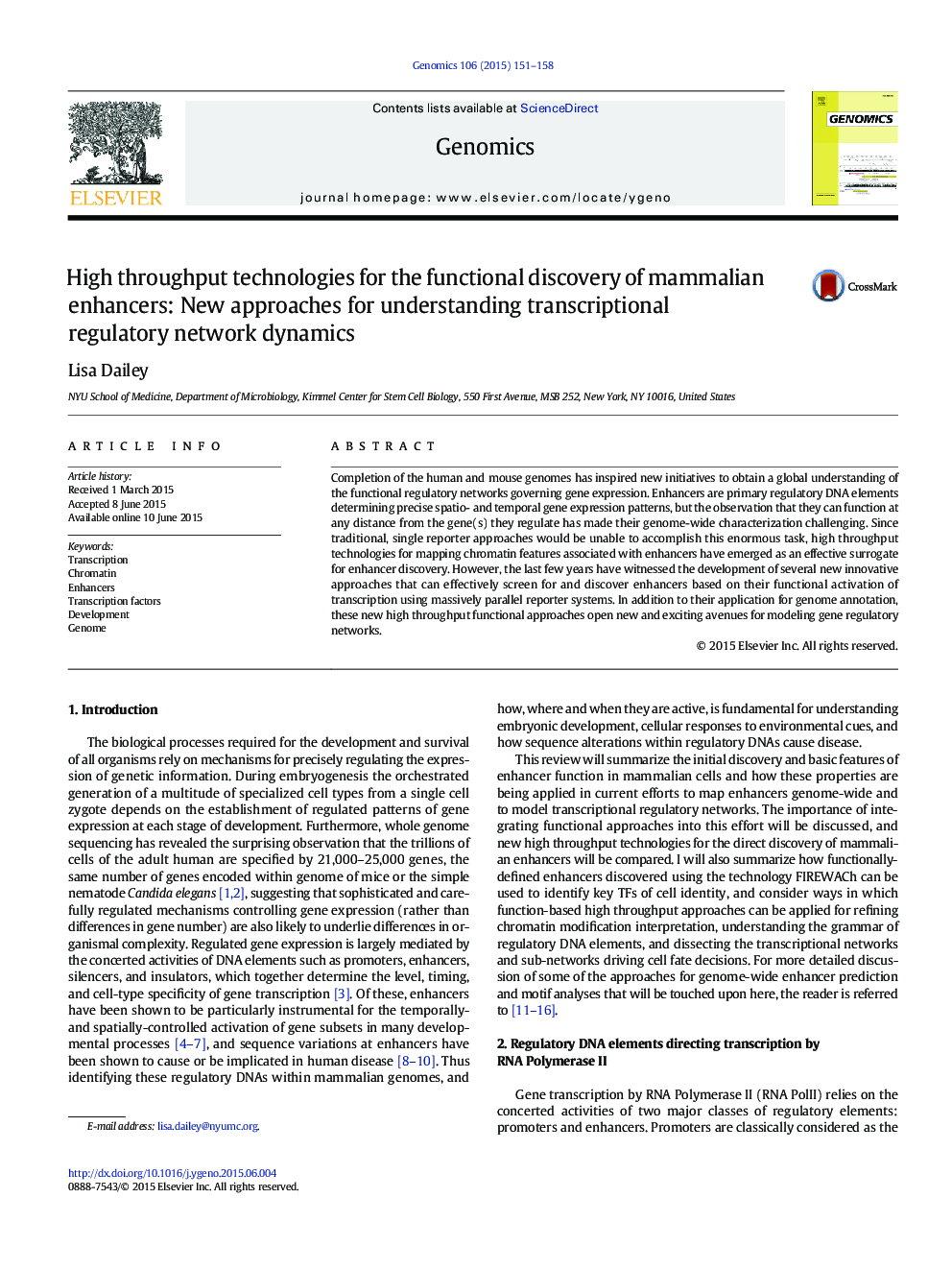| Article ID | Journal | Published Year | Pages | File Type |
|---|---|---|---|---|
| 5907717 | Genomics | 2015 | 8 Pages |
â¢Enhancers direct temporally- and spatially-controlled gene transcription.â¢Distinctive chromatin features are used for genome-wide enhancer prediction.â¢New high throughput technologies permit the functional identification of enhancers.â¢Integration of descriptive- and functional approaches improves genome analyses.â¢Functional technologies offer new insights into transcription network dynamics.
Completion of the human and mouse genomes has inspired new initiatives to obtain a global understanding of the functional regulatory networks governing gene expression. Enhancers are primary regulatory DNA elements determining precise spatio- and temporal gene expression patterns, but the observation that they can function at any distance from the gene(s) they regulate has made their genome-wide characterization challenging. Since traditional, single reporter approaches would be unable to accomplish this enormous task, high throughput technologies for mapping chromatin features associated with enhancers have emerged as an effective surrogate for enhancer discovery. However, the last few years have witnessed the development of several new innovative approaches that can effectively screen for and discover enhancers based on their functional activation of transcription using massively parallel reporter systems. In addition to their application for genome annotation, these new high throughput functional approaches open new and exciting avenues for modeling gene regulatory networks.
